Winter Kayaking and Paddling Gear
Jamie Stewart October 24th, 2016 Posted In: Articles Tags: Kayak, SUP
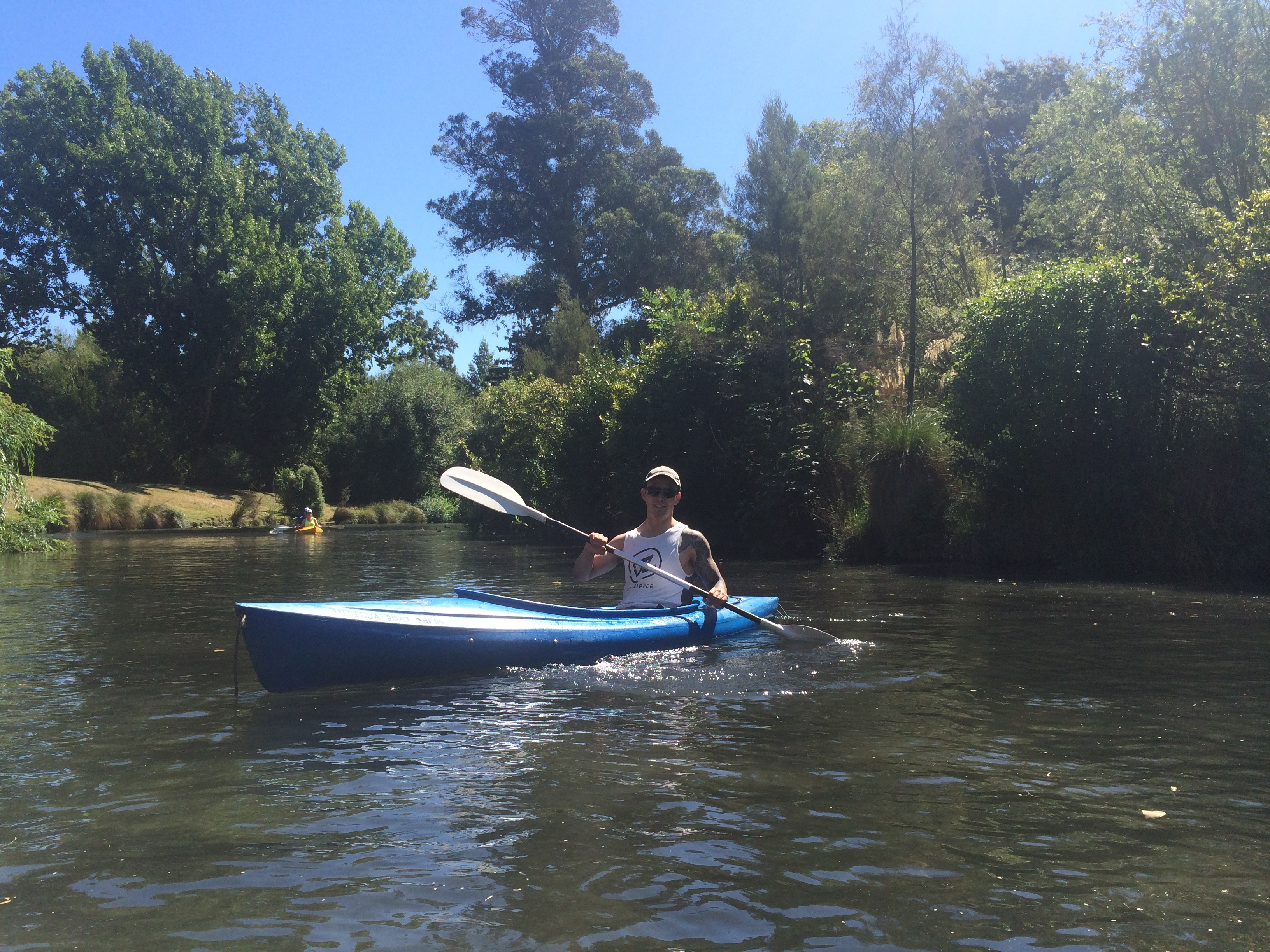
That’s me in Avon River!
It’s cold, storm clouds threaten on the horizon, and the wind has a chilling bite. Oh well, guess it’s not a day for winter kayaking – time to go back to bed and not feel bad about wasting the day. But before you succumb to a weekend of Netflix and Chinese food spooned from cartons, know that cold weather is no excuse for putting the brakes on your paddling plans. With the right gear, paddling in cold weather can be just as enjoyable as a leisurely summer afternoon on the water.
It’s time to embrace the weekend warrior spirit, dig deep for motivation, put those extra layers on, and get paddling.
Six Gear Fundamentals for Winter Kayaking and Paddling
1. Dress for the Area
You should choose your winter kayaking gear based on the conditions you’re going to encounter at the place of paddling. Temperature and forecasted weather will be major influencers, but don’t forget to take water conditions into account. Rough conditions with strong currents, waves, or high winds will result in you taking on more water, which you’ll need to prepare for.
2. Dress for Water Temperature, Not Air Temperature
Beginners often make the mistake of under dressing as the air temperature is mild. And even though you’ll be seated in your kayak or standing on your paddle board most of the time, you can’t rule out the chance of going for a dip. Body heat can decrease up to five times faster in cold water than in cold air at equal temperatures, so wear gear that will keep you warm even when you’re drenched.
3. Get the Hang of Layering
Having multiple layers of clothes helps you prepare for the wild swings in temperature on a typical day on the water. Body temperature will increase the more you exert yourself paddling but can decrease sharply when you stop or if you get wet. Layering will allow you to subtract or add clothes so you always remain comfortable.
4. Avoid Cotton
Cotton is the worst material for any outdoor activity. It soaks up water like a sponge, is heavy when wet, takes ages to dry, and it sucks warmth from your body as your body tries to heat the moisture held in the material.
5. Always Prepare for the Worst
I consider myself an optimist, but when it comes to paddling, I always think of the worst possible scenario. Even if you’re an experienced paddler, there’s always the chance of going overboard. And even if you don’t capsize, you’ll still take on water from paddle strokes, waves, and the rain. If you’re on a day trip across large, open channels or coastlines, there may be few places to stop to change clothes or heat up. With this is mind, it makes sense to choose clothes where you’ll be (somewhat) comfortable paddling in for a couple of hours when soaked through.
6. Bring a Change of Clothes
Leaving a set of clothes at the put out can make the trip so much more enjoyable. Combining clean clothes with a flask of tea or hot chocolate you’ve also prepared, and you’ll be wriggling your toes in sheer satisfaction. If you’re going to be on the water for the whole day, bringing extra layers in a dry bag could literally end up being a lifesaver.
Gear for Winter Kayaking
What you wear for kayaking and canoeing is determined by the type of kayaking you’re doing, the waterway you’re in, the season, and the chance of going for a swim. There are two main groups of kayaks, sit-in and sit-on-top, with each one having different characteristics making them more adapt for particular environments.
Open top boats, such as sit-on-top recreational kayaks and canoes, are better suited for warmer weather and calm conditions. They don’t provide much shelter from the elements, but they can be used in cold conditions if you’re dressed appropriately. They have the advantage of quick re-entry if you do happen to capsize.
If you’re paddling in rough conditions at sea or embracing the thrill of whitewater, then a closed cockpit will minimize the amount of water you take on. Use of a spray skirt will also stop water from entering the cockpit. With both sit-in and sit-on-top boats, you’re lifted out of the water and have some protection, but you’re still largely exposed to the elements. Therefore, your first line of defense is the clothes on your back. Here’s a rundown of the available clothing options you have for paddling in cold conditions:
Synthetic and Thermal Clothing
Tight fitting garments that trap heat, don’t hold moisture, and that can be layered are ideal. Remember to follow the three layer system when dressing: wick, insulate, and then waterproof. The baselayer against your skin (wicking layer) should suck out sweat and water and bring it to the surface. Heat-retaining layers that don’t hold water should then be added to insulate and trap heat. A couple of fleeces that you can take on and off with temperature changes are perfect. The final layer should be wind and waterproof, so you’re protected from the elements during winter kayaking.
Paddling Jacket
Sealed at the neck, waist and wrists, and made from waterproof materials, paddling jackets make excellent top layers. These jackets are designed to shield paddlers from waves, spray, and the weather. They’re a fantastic solution to cold water paddling, but their downside is that they only offer protection to the upper body.
Wetsuit
When you’re paddling in cold water and complete immersion is likely, a good wetsuit is worth its weight in gold. They protect against abrasions, keep you warm and comfortable in cold conditions, and could save you from cold shock if you wet exit, or from hypothermia if you’re out on the water for a prolonged period. Wetsuits keep you warm by trapping a thin layer of water between your skin and the neoprene layer. The water doesn’t circulate, and your body heats this layer which then acts as insulation. Make sure you get properly fitted for a wetsuit that is the right thickness for the conditions you’ll encounter and has enough flexibility for you to stroke without restrictions. Many paddlers opt for a sleeveless wetsuit (known as a Farmer John), so they can paddle freely.
Drysuit
Drysuits are likely to be overkill for your needs but are worth mentioning here anyway. Dry suits feature seals at the openings which stop any water from entering the suit. Unlike the wetsuit, drysuits tend to be very expensive and are only really used for expeditions in extremely cold places.
Paddling Gloves
When it comes to keeping your hands warm you have two options; pogies, which go over your hands but still leave the palm open so you have full control of the paddle, and neoprene gloves, which keep your hands warm but don’t provide as much grip and control. It’s a personal choice, but make sure you choose one because paddling with cold, wet hands is torture.
Booties
Watersport sandals or even sneakers are usually fine for paddling, but if your feet are going to be wet and cold for hours, you may want to consider wetsuit booties. Your feet will be kept toasty with booties, and you’ll also have the advantage of having good grip underfoot.
PFD
Although it’s not going to do much to keep you warm, remember that you should always be wearing your PFD in and around the water. If you get a paddling wetsuit properly fitted and stick to tight fitting layers (like you’re supposed to), your PFD should have no problem fitting over your other clothing.
- O’Neill Baselayer
- O’Neill Drysuit
- NRS Hydroskin Jacket
- NRS Paddle Mitts
- NRS Boundary Shoe
Paddle Board Gear for Cold Water
Paddle boarders can get away with boardie shorts, t-shirts, and barefooted in summer, but when it gets cold, they’ll be wrapped up in pretty much the same gear as kayakers. Layering with synthetic material, like polypropylene, still applies when paddle boarding. Many paddle boarders prefer stylish neoprene tops and bottoms, and then wearing their boardie shorts on top (old habits die hard).
If the conditions call for a wetsuit, summer wetsuits that are 2-3mm thick are much better for paddle boarding. Winter kayaking and paddle boarding wetsuits are just way too restrictive, and that extra bit of stretch you get from a summer wetsuit allows full movement. Booties are a great option for keeping your feet warm. Their thin sole doesn’t dull the feel of the board beneath your feet, and you can still balance and react to wind and waves. Unlike kayaking, your hands aren’t going to get wet from drips, and a pair of woolen gloves can be enough to provide respite from the chilly air. If you find your hands getting wet often, a thin pair of neoprene gloves will keep your hands warm while still providing good grip of the shaft.
Conclusion
Winter will scare off all but the hardiest of paddlers, but if you’re dressed appropriately, there’s no reason for your hobby to be seasonal. Preparation is key to enjoying winter kayaking and paddling. Knowing how to dress for cold weather is a big part of being prepared, but you also need to consider your skill level, the type of paddling you’re doing, and the weather forecast.
In addition, winter is also a time when you should be even more vigilant about trip planning and safety practices. Always tell people where you’re going, when you expect to be back, and always pack basic safety equipment in a dry bag. An extra layer, snacks, mobile phone, and a first aid kit are essentials for any trip. With a little planning and knowledge, you’ll be well prepared to take advantage of those crisp and cool mornings for winter kayaking.


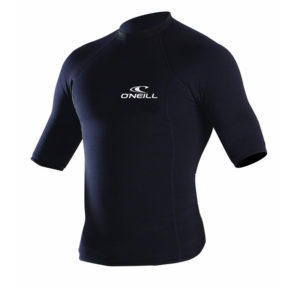
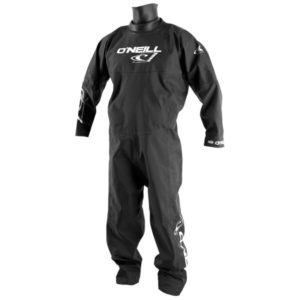
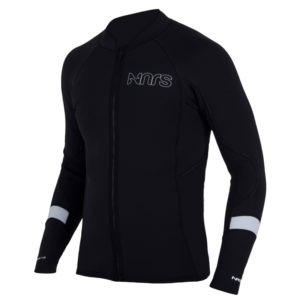
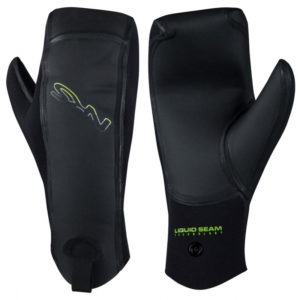

thank you for this very helpful advice. starting to enjoy winter kayaking here in the beautiful salish sea in british columbia but have been a little fearful. looking forward to getting a paddle wetsuit and booties and pogies, thanks to you jamie!